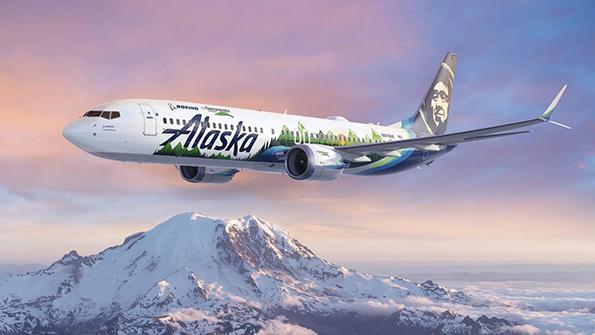
A cabin sidewall panel produced from recycled carbon composite material was tested onboard the Boeing ecoDemonstrator, an Alaska Airlines 737 MAX 9.
Over the last 10 years, Boeing has investigated different ways to recycle aircraft scrap from its 777X Composite Wing Center in Everett, Washington, to keep that site zero-waste-to-landfill and give composite scrap a second life.
Boeing Commercial Airplanes regional director-cabin marketing Brenna Wynhof told an audience at the AIX Passenger Experience Conference in Hamburg that while repurposing the scrap into other products—such as laptop cases, car parts and railway undercarriages—is a great way to recycle the carbon composites, “what would be even more incredible is if we could bring that material back into the airplane.”
In 2021 on Boeing’s ecoDemonstrator, an Alaska Airlines 737 MAX 9, a sidewall panel made from recycled carbon fiber was produced by the same company that recycles the materials from the Composite Wing Center and flight tested.
Wynhof told ATW on the sidelines of AIX that the company flew five sidewall panels, which performed “incredibly well. It passed all its acoustics tests; that material actually stands up to flammability requirements better than what’s currently flying today,” she said. “And it wound up saving a little bit of weight. And so, in that particular case, on a 737-sized airplane, using an entire shipset would save about 25 lb.”
While the sidewall panel project is awaiting additional unique tooling and funding, Boeing is exploring recycled carbon fiber for additional cabin components, such as sandwich panels, which Wynhof said are used all over the cabin in nonloadbearing structures that don’t need to have the same sound-dampening requirements as sidewall panels, such as lavatory and galley walls, partitions, monuments and bins. She said the company hopes to test them in the “very near future.”
In the meantime, Wynhof said Boeing engineers have developed a simpler offshoot of the sidewall project by creating sustainable cargo bay liners. “And those will soon be flying on our 2023 ecoDemonstrator, which is a 777-200ER,” she said.
“If this carbon fiber work has shown us anything, it’s that the road to sustainable aviation is messy and imperfect and nonlinear,” Wynhof said. “Cabin sustainability is a really tough nut to crack and nobody, not even a company the size of Boeing, is impervious to things like development challenges, cost pressures, projects diversions, even being flat out told no. But those challenges just make the journey that much more rewarding when you do finally get to the other side of a really important and inspiring project.”





